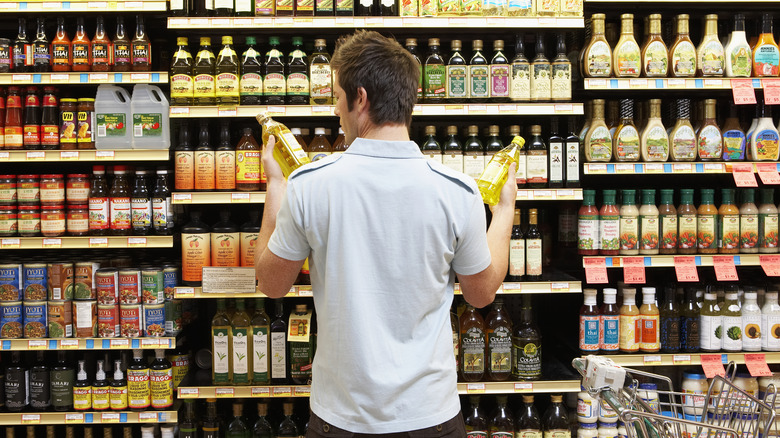Are Grocery Stores And Supermarkets The Same Thing?
The end piece of a bread loaf: Do you call it the "heel," the "crust," or the "butt?" Is the evening meal "dinner" or supper?" Regional vernacular differences are an etymologist's labyrinth. But, there's one particular would-be synonym that, today, we want to debunk: Are grocery stores and supermarkets the same thing?
The word "grocery" itself used to have a different meaning than most folks use today. According to the Living History of Illinois and Chicago, if you were stepping out to go to the "grocery" during the 17th century, you were having a drink at the bar. But, per the lexicon authority at Merriam-Webster, the word "grocery" originates from the word "gross," as in selling large quantities at wholesale prices. But, whether you're pushing a "carriage," a "buggy," or a "shopping cart," buying groceries is probably something you regularly do. And, according to Jenna Coleman (consumer behavior analyst and founder of grocery delivery service Particular Pantry), if you're shopping at a supermarket or a grocery store, those are different establishments, per Reader's Digest.
So, what's the difference?
Supermarkets are super-sized; Grocery stores sell groceries
Per Reader's Digest, Coleman says the definitive difference between modern supermarkets and grocery stores comes down to two things: "scale and specific products." Grocery stores primarily sell food and beverage items, Coleman explains; There might be an aisle for paper towels and dish soap, but that's basically it. Supermarkets, on the other hand, are where you'll find cosmetics, laundry detergent, avocados, pain relievers, a new pair of blue jeans, and bulk rice all under one roof.
The advent of the supermarket marked a major shift in the way U.S. consumers bought groceries. In 1916, Piggly-Wiggly was the first store ever to invent the self-service most folks follow today, says Time. Prior, it was common practice for shoppers to hand their grocery lists to clerks, who would then pursue store inventory and hunt down the items themselves. The self-service model introduced a level of customer autonomy and choice between products. But, it also paved the way for heightened product advertisement and branding strategies, like shelving impulse buys at eye level.
These supermarkets were also more affordable than specialty grocery stores since they could stock more volume for lower overhead costs. According to the CDC, supermarkets today follow the same model, offering a wider selection of products than grocery stores are able to offer, typically at lower prices.
Supermarkets are a one-stop-shop and visiting a "supermarket" versus a "grocery store" can be a difference of both products and price tags.

